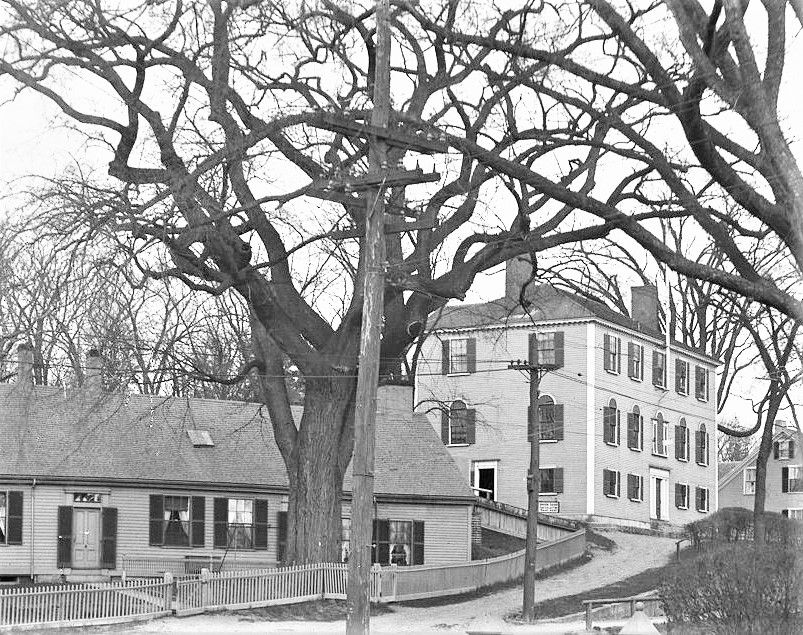Hingham Municipal Lighting Plant, MA, 1918. Crossover Electric Pole in Town Center
By Joe Maurath, Jr.; posted July 14, 2020
View Original: Click to zoom, then click to magnify (803 x 635) 284KB

|
Shown is one of the town's electric service poles in the forementioned town's business district during 1918. In the background is one of the street railway's poles. Some of their lines were draped upon their own poles; others shared space with those of the electric light plant and telephone company. Many intersections like this one in Hingham were illuminated by incandescent street lamps that were mounted on a span wire with the fixture over the middle of the road (one was at this location but was hardly captured by the photographer). This lighting practice was rather unusual since most other communities adopted long mast arms for longer reaches. Stated in the light plant's 1918 report, of interest.... "Owing to the fact that the town's street lights were operated until 1AM, they came on one hour later in the spring. Six month's income from street lighting without daylight saving in 1917 was $10,850. With daylight saving in 1918 income was $1,481 less or $9369 (since daylight saving was not observed in 1917...). Some towns around Boston were still observing the 1AM turn-off hour for their street lights like Hingham in the late teens. Within the next few years that would change to full-night service owing to additional vehicular traffic and the growing popularity of the automobile. These were expensive decisions because of the additional kilowatt hours purchased and the fact that coal (for power generation) was becoming expensive and somewhat scarce during the WW1 years. The light plant's 1918 report indicated that the town's electricity provider (the Weymouth Light and Power Company) was having solvency issues and in order to stay in business "wholesale power from them rose from 3.5 cents to 4 cents per kilowatt hour. This price will remain the same unless there is a reduction in (their) cost of coal and labor." These extra expenses affected all other coal-burning utilities throughout New England and rendered rate increases. FYI... The last known street lighting system to adopt to full-night street lighting was in Concord, MA. It was the last of four or five 6.6A street series loops that existed in that town. It was retired in 1992. The system had 1920s-40s radial wave fixtures with 1,000 lumen lightbulbs in them with about 90 lights in each series string. A weatherproof time-switch shut them off with a standard photocontrol used for turn-on. Everything was mounted on the same pole as the series regulator and oil-switch. |